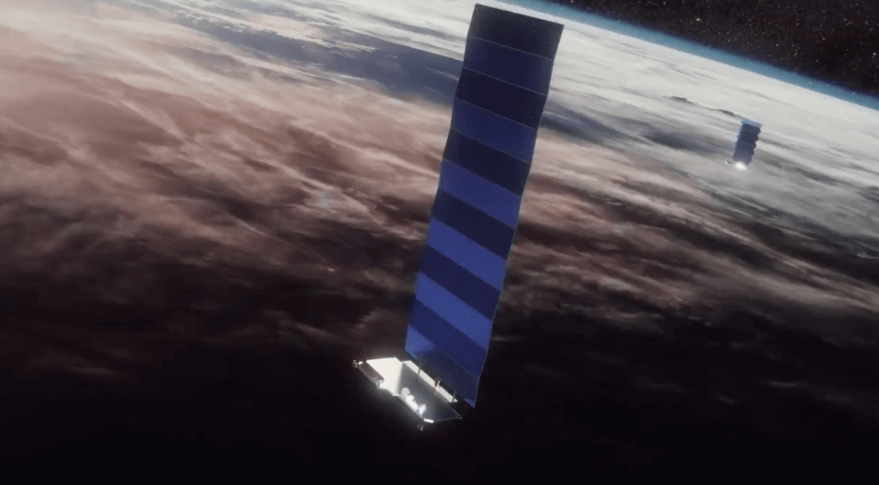
‘Mounting evidence’ shows need for Starlink Gen 2 environmental review, says Viasat (Image Credit: Space News)
TAMPA, Fla. — Evidence is mounting of a need to perform an environmental review before approving SpaceX’s plans to add nearly 30,000 satellites to its Starlink constellation, satellite broadband competitor Viasat told the FCC May 2.
SpaceX shouldn’t be allowed to greatly expand its Starlink network while light pollution issues surrounding its deployed satellites remain unresolved, Jarrett Taubman, Viasat vice president and deputy chief of government affairs, said in a letter to the regulator.
While calls for a thorough environmental review that Viasat made for Starlink’s current generation of satellites in December 2020 were largely rejected, Taubman said SpaceX’s plan to grow the constellation by seven times “would have significant aesthetic, scientific, social and cultural, and health effects on the human environment on Earth.”
SpaceX has already deployed more than half of the 4,408 first-generation Starlink satellites the FCC has approved to operate at altitudes of around 550 kilometers. The company is seeking FCC permission for a larger constellation of second-generation Starlinks that it proposes to operate at lower altitudes — between 340 and 614 kilometers — in order to improve performance.
Viasat and astronomers say operating significantly more satellites even closer to the Earth would exacerbate Starlink’s light pollution.
In rejecting Viasat’s earlier petition to conduct a thorough environmental review on Starlink, the FCC urged SpaceX to continue to work closely with astronomers to mitigate the brightness of its satellites.
SpaceX has said it is incorporating visors on Starlink satellites to prevent sunlight from reflecting off them, and implementing other measures to reduce interference with astronomers.
But in the May 2 letter to the FCC, Taubman said these efforts “have not fully mitigated” the constellation’s light pollution issue.
He said “there is mounting evidence—including analysis by independent experts—of the adverse, ongoing, and increasing impact of Starlink operations on the night sky notwithstanding any such efforts.”
The letter pointed to a paper astronomers published in Nature Astronomy in April, which said none of the techniques that Starlink and other LEO constellations are exploring can fully avoid them “harming astronomical science … launching significantly fewer satellites is the only mitigation that could do this.”
In a Feb. 8 letter to the FCC, NASA said SpaceX’s proposed Gen 2 network could double the number of Hubble Space Telescope images that contain satellite streaks, currently 8% of all images, and undermine the ability of the United States to detect and potentially redirect asteroids heading to Earth.
“NASA estimates that there would be a Starlink in every single asteroid survey image taken for planetary defense against hazardous asteroid impacts, decreasing asteroid survey effectiveness by rendering portions of images unusable,” the space agency said in a letter signed by Samantha Fonder, NASA’s representative to the Commercial Space Transportation Interagency Group.
SpaceX did not respond to a request for comment.
Of the 17 Falcon 9 missions so far this year, 10 have been for Starlink. They alone have launched nearly 500 satellites for the constellation, according to statistics maintained by spaceflight analyst and astronomer Jonathan McDowell.
The next batch of Starlink satellites is slated to launch May 5.








